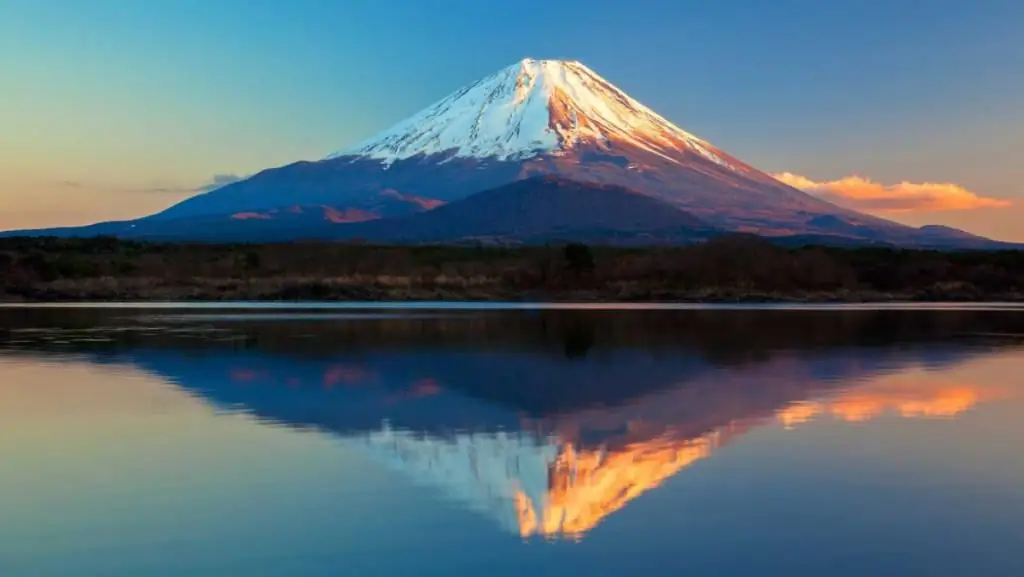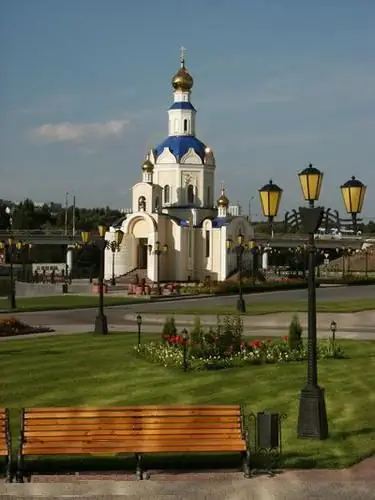- Author Harold Hamphrey [email protected].
- Public 2023-12-17 10:06.
- Last modified 2025-01-24 11:10.
In the cold, not fully explored Arctic Ocean, there is a cluster of islands called the Severnaya Zemlya archipelago. It consists of six large and several small islands and individual rocks. Most of the small islands are completely covered with eternal ice, which forms their relief.
The group of Severnaya Zemlya islands is located at the junction of two northern seas - the cold Kara Sea and the Laptev Sea and is the northernmost archipelago in Asia. The most extreme point is considered to be the Arctic Cape on Komsomolets Island.
Last major discovery

Despite the fact that the names of most of the islands of the Northern Land evoke nostalgia for the Soviet Union, the archipelago was discovered before the revolution, in early September 1913. This discovery was made by a research expedition led by Boris Vilkitsky and turned out to be the last major discovery of uncharted lands on our planet. At the time of discovery, scientists fromthe expedition considered the archipelago to be a single island, and this erroneous opinion existed for quite a long time.
Land of Emperor Nicholas II , in honor of the emperor in power.
For a long time after the discovery of the island of the Severnaya Zemlya archipelago, no one visited. Only once, in 1919, scientists of the Norwegian expedition of Roald Amundsen visited Bolshevik Island, and possibly Lesser Taimyr. Russia was in a fever during these years: the First World War, then the October Revolution, the Civil War…
Research of these cold inhospitable lands was continued only in the early 30s of the last century. It was then that members of the expedition led by Georgy Ushakov and Nikolai Urvantsev discovered and described most of the islands of the archipelago. They also gave most of the names to the islands of the Northern Land.
Climatic conditions

Most of the territory of the Severnaya Zemlya islands is covered with large glaciers. Huge massifs of ice come close to steep shores and hang over the waters of the cold ocean. The impression of natural beauty and power is simply stunning!
In places where glaciers come close to the ocean, icebergs form. They rarely exceed1.5-2 km in length, but there are exceptions. In 1953, the formation of an iceberg of record size for these places was recorded - more than 12 km in length!
There are unexpectedly many rivers and lakes on large islands, but most of the year they are hidden under ice and snow. The murmur of running water can only be heard in July and August.
The climate on the islands is arctic harsh. Temperatures drop to -47°C during the long polar winter, with an almost constant icy squally wind blowing.
In summer, the maximum temperature does not exceed +6 °C, and it is not so warm every year.
Plants of the Northern Land

Due to the severity of the northern climate and the fact that most of the area of the islands of the archipelago is occupied by glaciers, the flora of the islands of Severnaya Zemlya is very scarce. In those areas where the land is free from ice cover, the soil is heavily waterlogged. Yes, and permafrost begins at a depth of 15 cm from the surface, which also does not contribute to the violent growth of plants.
Basically, the flora of the islands is represented by various mosses and lichens, occasionally there are perennial flowering plants. On some islands closer to the pole, there is no vegetation at all. For example, Bolshevik Island in the Severnaya Zemlya archipelago is completely devoid of vegetation.
In July, when the waters of rivers and a few lakes are freed from ice, the flora is transformed. Plants that bloom on the soil freed from ice surprise with their small size. Often their stems rise above creeping mossesonly 3-15 cm. Scientists studying the flora of these islands are sure that such dimensions are due to the severity of the climate and low solar activity. It was noted that the richest vegetation cover is closer to the places of permanent nesting of birds, where the soil is fertilized from year to year.
But multi-colored lilac, pink, white blooming oases among snow and ice look somewhat surprising. It seems like a brand new land in the northern islands!
Animals and birds

Surprisingly, the fauna of the islands is quite diverse. Polar bears, wolves, and a lot of arctic foxes are often found here, which prey on representatives of a large number of lemmings. In winter, wild reindeer often roam the islands across the sea ice.
Life is in full swing in the cold waters off the coast of the Severnaya Zemlya Islands. Huge walruses thrive here. One species of walrus lives only in the waters of the Laptev Sea - this is the Laptev walrus (Odobenus rosmarus laptevi). Greenland seals, seals, polar beluga dolphins live here. There is always enough fish in these northern waters, so there is enough food for everyone.
There are many birds in these inhospitable lands, both sea and nesting on the ground. With the beginning of the polar summer, on the rocks of the southern and southeastern islands of the archipelago, there are numerous bird markets and individual colonies of nesting birds.
The only ice base

Despite the vast territory of the archipelago, the total area of its islandsexceeds the territory of Belgium or Albania, there is no population at all.
Due to the cold climate and almost constant ice storms, the local population has never been here.
Currently, on the Bolshevik Island of Severnaya Zemlya, there is the only ice base in the archipelago, Cape Baranov, which operates thanks to the Arctic and Antarctic Research Institute. Back in 1986, this base was founded as the Prima polar station, created to study the flora and fauna of the polar regions. Then it was mothballed and reopened only in June 2013.
Today it is used mainly as a base for expeditions to conquer the North Pole.
An archipelago within an archipelago

Discovered in 1913 by an expedition led by Boris Vilkitsky, a group of small islands was named the Sedov Archipelago in honor of the famous polar explorer Georgy Sedov.
The archipelago consists of six relatively large islands and several small ones that do not even have names. The total area of the islands included in it does not exceed 90 km2.
In 1930-1932, when the Urvantsev-Ushakov research expedition compiled a complete map of these lands, the Sedov archipelago was territorially included in the Severnaya Zemlya archipelago.
On the second largest island in the Sedov archipelago, Sredny Severnaya Zemlya, there is a border outpost, warehouses with fuel and food supplies.
During the SovietUnion, in the period 1959 to 1997, an operating polar station and a border outpost were built here. The number of their staff never exceeded 30 people. Equipment, food and other necessary things were delivered by plane, and an airstrip was even built next to the barracks of the border guards, which is still functioning.
Museum in the Far North

Notable for the small rocky island Sredny is also the fact that it hosts the only Museum of the Discovery and Exploration of Severnaya Zemlya. It was created by enthusiasts from among the staff of the Arctic Institute.
The museum is located in a small house where Georgy Ushakov used to live. There are many photographs in the exposition, some of which depict members of the Urvantsev-Ushakov expedition.
Other exhibits are devoted to the study of the fauna of the Severnaya Zemlya Islands and the local sparse vegetation.
Tourism beyond the Arctic Circle

Recently, these once uninhabited islands are increasingly visited by people. This is partly due to the fact that almost no human has set foot on these vast, undeveloped territories, here you can feel like a pioneer. Of course, such sensations attract people who love adventure.
Besides, spring and short summer are really beautiful here. This is the harsh northern beauty, when rare primroses sprout right out of the ice, and in the vast expanses you can see polar bears hunting.






